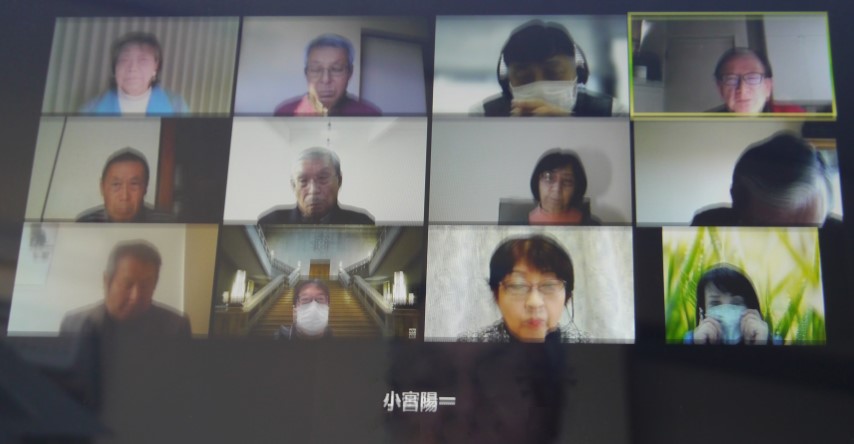 5 international relations associations in the Tokatsu area held their second liaison council on February 25th. (No.21-20)
5 international relations associations in the Tokatsu area held their second liaison council on February 25th. (No.21-20) Date and Time : February 25th ( Fri.) ,2022 15:00 ~ 16:40
Participants : (AIRA/Abiko) Kitajima, Hesaki, Nakamura
(KIRA/Kashiwa) Kosuge, Kato, Arai, Sato, Ohno,
(NIFA/Nagareyama) Komiya, Nakahashi, (NIA/Noda) Dei, Hukawa (MIEA/Matsudo) Watanabe
Total 13 participants (Title omitted)
The Chair of the five organizations this year is KIRA/Kashiwa. The first liaison council was held on September 10th and they had a supplementary online meeting on November 26th to exchange information and views they couldn’t discuss in the previous meeting. The topics of additional meeting covered how each organization held meetings and kept motivation of staff members in the COVID-19 pandemic.
The second council this time was also held online due to the pre-emergency coronavirus measures imposed on Chiba Prefecture. They reported and exchanged views about the meetings they had attended and shared the information among the five organizations. The following are the topics discussed in the council:
1. “Sustainable Development Goals (SDGs), international relations, and co-existence with multi cultures”

The NIA and KIRA participants reported the meeting, “Chiba International Relations Associations and others Network Meeting”, organized by the Chiba Prefecture.
SDGs is known as the Global Goals, for the purpose of making the world better where all people enjoy peace and prosperity by 2030. SDGs include 17 goals and 169 targets.
In the online meeting, the participants exchanged views on the relationship between their activities and SDGs.
The attendees reported that their own activities including teaching easy Japanese to non-Japanese people, running food banks or night junior high schools. One of the participants posed a question that international exchange activities were all connected with SDGs. Then, they discussed the importance of the cross-cultural activities while being aware of the relationship with SDGs.
2. “To assure foreign residents a safe life in the community and to provide them with active life”
The KIRA/Kashiwa members took part in the meeting. They showed some examples of the cities with a lot of foreign residents. In those cities, “convenience stores functioned as a base for multicultural symbiosis”. There are a lot of issues relating to non-Japanese residents which must be solved because the number of the non-Japanese is increasing. Teaching them Japanese is one of the crucial issues for Japan but the supporting system by authorities has not been provided enough. The NIF/ Nagareyama members said that the Japanese language education is given to elementary and junior high school students, but posed a question that enough language education is given to high school students. Other issues and challenges of the co-existence with multi cultures were on the discussion.
3. “What triggers the young and working generation to take part in community activities beyond the COVID-19 pandemic”.
The KIRA/Kashiwa members having taken part in the meeting reported the three points below.
1) Understanding the real situation of the young
It is unrealistic to have the young people engaged in community activities for a long period time because they are busy. In order to make them take part in the activities, we have to set the duration and roles they would play in advance.
2) Preparing loose rules for youngsters
It is difficult for young people to be confined in a stringent social norm. Therefore, loose rules must be prepared for them.
3) Having coordination awareness
It is imperative to have someone who can serve as liaison and coordination between the organization and volunteers to make things smoothly.
Then, the Chair (NIFA/Nagareyama) for the coming fiscal year was introduced to others and concluded the meeting.
The efforts for SDGs discussed in the meeting are taken widely in the administrative bodies, educational institutions from elementary schools to universities, and companies. Taking these efforts into consideration, AIRA has to take actions to facilitate challenges and to consider ways and means of attracting the young into AIRA’s activities.
(Translated by Ms.KOYAMA Hitomi)
